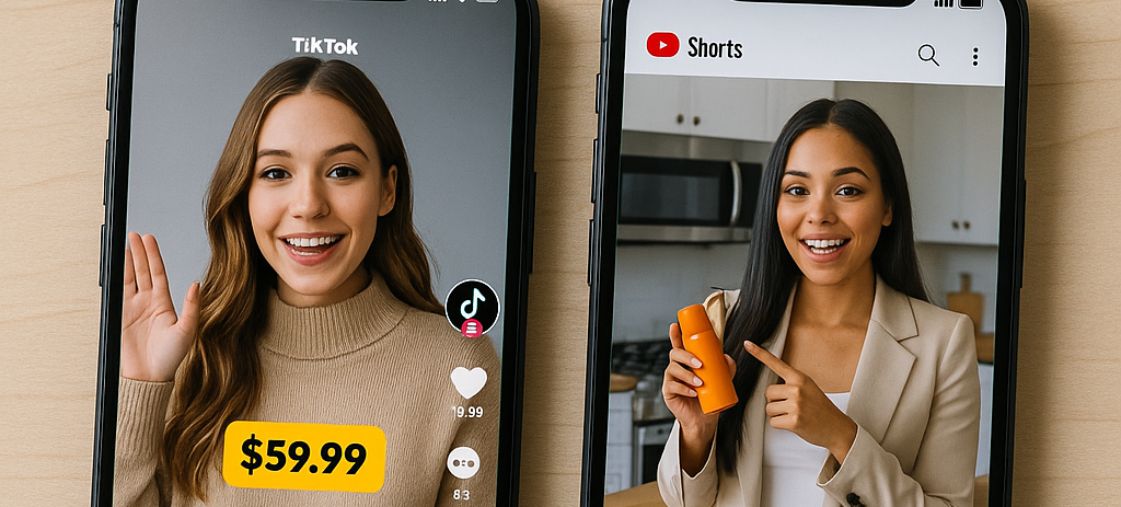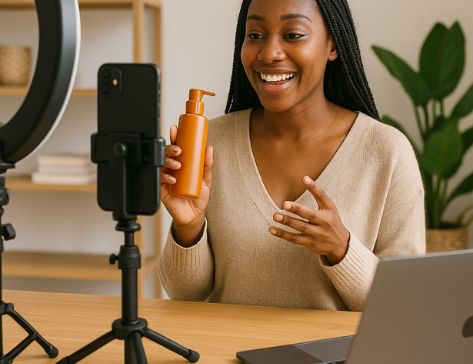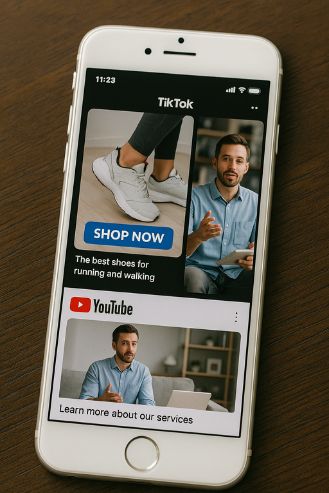
TikTok and YouTube Shorts Ad Strategies That Actually Convert
TikTok and YouTube Shorts ad strategies are the backbone of modern short‑form performance marketing, and when you apply a disciplined, creative‑first playbook you can consistently lower CPAs, speed up learning cycles, and unlock incremental revenue. These mobile‑native placements thrive on pattern‑interrupt hooks, fast visual pacing, and extremely clear calls to action. In this guide, you’ll get a practical, step‑by‑step framework you can ship this week—plus battle‑tested tips, templates, and measurement tactics to help your short‑form ads actually convert.
Winning on short‑form starts with creative excellence: your first second must earn the second, and your first three seconds must earn the next ten. If you want inspiration on world‑class hooks and editing, study examples of creative excellence that blend curiosity gaps, contrast, and fast social proof. Remember that the ad unit is the content: native style, native pacing, and native sound are non‑negotiable.
While TikTok and Shorts look similar, their user intent differs. TikTok excels at discovery and impulse action—great for net‑new demand and product education—whereas YouTube Shorts benefits from Google identity graphs and works well in full‑funnel sequences when paired with Search and long‑form on YouTube. Your strategy should reflect these nuances: build more creative iterations for TikTok to match creative fatigue speed, and lean into audience + intent layering on Shorts to compound conversion rates.
Short‑form is also winning auction dynamics. Inventory is expanding, CPMs are competitive, and short attention formats are capturing outsized watch time. As the rise of in‑stream ads continues, marketers who master creative velocity, rapid testing, and onsite conversion UX will out‑learn competitors and keep costs stable even as competition increases.

1) Creative System: Hook → Value → Proof → CTA
Every winning short‑form ad compresses the buyer journey into seconds. Use this four‑part skeleton to craft concepts quickly and consistently:
- Hook (0–2s): Pattern interrupt that earns attention. Examples: a bold claim, a surprising visual transformation, a question, or a strong POV (“I wasted $2,000 on X—until I tried Y”).
- Value (2–8s): One core benefit delivered with motion: demo, overlay text, and voiceover. Avoid lists of features—show the outcome.
- Proof (5–12s): Social proof flashes (UGC snippets, star ratings, “10,248+ sales”), quick before/after, or mini case.
- CTA (8–15s): One clear action: “Shop now,” “Start free trial,” or “Learn more.” Repeat verbally and visually.
2) 7‑Step Launch Playbook (Both Platforms)
- Define the conversion: What counts as success—lead, purchase, add‑to‑cart, or app install? Instrument events with platform pixels and server‑side tracking.
- Ship 6–12 concepts on day 1: Aim for 3 angles × 2 formats (talking head, demo, green‑screen). Variety beats perfection at launch.
- Use native editing: Produce in CapCut/Final Cut, then finish with native text and sounds so the ad feels organic.
- Set learning budgets: Back into budget from statistical power: target ≥50 conversion events per ad set per week to stabilize delivery.
- Run broad + one intent layer: Broad for scale; add one audience layer (e.g., viewers of related topics) for Shorts to improve match quality.
- Kill/keep rules: Pause any creative with 1.5× CPA after 1,500–3,000 impressions. Accelerate winners with budget increases of 20–30% every 24 hours.
- Refresh weekly: Fatigue hits fast; rotate hooks more than entire ads. Keep the winning middle and CTA; swap the first 3 seconds.
3) TikTok vs. YouTube Shorts: Targeting, Bidding, and Formats
TikTok
- Objectives: Optimize for conversions or app events early; traffic/video views rarely back‑propagate efficiently.
- Bidding: Start with lowest cost; test cost cap once volume is stable to rein in CPA volatility.
- Audiences: Broad, interest clusters, and high‑intent custom (e.g., site engagers, view‑through). Test Spark Ads for organic‑to‑paid uplift.
- Creative: UGC‑first, duets/stitches, green‑screen explainers, and product‑in‑hand demos. Music trends matter—pair with clear captions.
YouTube Shorts
- Inventory: Shorts placements inside Google Ads Video campaigns. Pair with in‑stream and long‑form for remarketing loops.
- Audiences: Custom segments (keywords/URLs), in‑market, and combined lists. Leverage your YouTube channel engagement for warm retargeting.
- Bidding: tCPA for stabilized accounts; tROAS for ecommerce with reliable feed and conversion values. Start with Maximize Conversions if data is thin.
- Creative: Slightly slower pacing can work than TikTok. Use “YouTube native” graphics, but keep subtitles and bold CTAs.
4) Five High‑Converting Creative Templates
- Problem → Relief: “Tired of [pain]? Watch this.” Show the pain viscerally, cut to solution, end with CTA and incentive (free ship, bonus trial days).
- Myth‑bust POV: “Everyone says do X. I did Y—here’s the data.” Works for B2B and prosumer when paired with screenshots or dashboards.
- Before/After Timeline: Use jump cuts and on‑screen progress bars. Keep the middle simple: one transformation metric.
- 3 Mistakes to Avoid: Educational authority piece; position product as the shortcut that prevents mistake #2.
- Unboxing + Micro‑Demo: 5–7 tight cuts: box → product → main benefit → proof flash → CTA. Add on‑screen checklist ticks.
5) Offer and Landing Page: Match the Momentum
Short‑form clicks are impulsive; your page must meet that energy. Keep above‑the‑fold insanely clear: one line value prop, one killer visual, and one primary button. Mirror the language and visuals from your winning creative so the user feels continuity of story. Reduce form fields, ensure Apple/Google Pay, and preload reviews near the primary CTA.
- Speed: LCP under 2.5s. Compress media. Host lightweight fonts. Lazy‑load everything else.
- Friction: Autofill forms, show progress (e.g., “Step 1 of 2”), and surface trust badges contextually—not as noise.
- Social proof: Modular UGC tiles, TikTok/Shorts embeds, star ratings, and “as seen in” logos.
- Incentives: Micro‑offers that make trying easy: 7‑day free, 15% off first order, free returns. Tie the incentive to the creative angle.
6) Measurement: What to Track and When to Decide
Judge creatives quickly on thumb‑stop power and clarity, then on conversion efficiency. Use a two‑gate model:
- Gate 1: Attention Quality (early): 3‑second view rate, hold to 50% watch, CTR. If those are weak, reshoot the hook before tinkering with targeting.
- Gate 2: Economics (later): CPC, CVR, CPA/ROAS. Compare against control creatives and your blended targets. If CTR is strong but CVR is weak, fix the landing page, not the ad.
Use platform breakdowns (age, placement, device) to spot segments where winners under‑deliver; duplicate and tailor the first 3 seconds to that segment. Capture post‑purchase surveys to triangulate impact when view‑through is high.
7) Rapid Testing Cadence
- Weekly: Ship 6–10 new hooks for your top 2 winning mids/CTAs. Keep the body, swap openings.
- Biweekly: Test 2 new angles (e.g., price anchoring vs. social proof). Each angle gets at least 2 creative executions.
- Monthly: Refresh the offer or incentive. Launch a fresh landing variant aligned to the top creative storyline.
8) Compliance, Brand Safety, and UX Details
- Claims: Avoid medical/financial promises; use ranges and “results vary” when needed. Prefer “based on 1,000+ customers.”
- Accessibility: High‑contrast captions, readable fonts, text safe‑zones away from UI buttons.
- Audio: Default sound on; mix VO at −8 to −12 LUFS so music doesn’t drown it out. Always add subtitles.
- Comment moderation: Pin FAQs, answer objections, and harvest question ideas for next iterations.
9) Example 15‑Second Script (Fill‑in‑the‑Blanks)
[0.0–0.8s] Hook: “I wasted [time/money] on [old way]… until I tried [product].” [0.8–5s] Value: Show the outcome in motion (overlay 3‑4 words, no jargon). [5–9s] Proof: Flash rating, quick testimonial, or mini before/after. [9–13s] CTA: “Start your free trial” + incentive badge. [13–15s] Repeat logo + URL and CTA; end on motion, not a static frame.
10) Common Mistakes to Avoid
- Over‑editing the middle: Most underperformance comes from weak hooks, not the body. Fix the first 3 seconds first.
- Feature dumps: Users buy outcomes. Replace specs with a benefit sentence and a moving demo.
- Irrelevant trends: Trends without message‑market fit inflate views and crush CVR. Lead with your angle, not the meme.
- One‑and‑done testing: Fatigue is real. Keep a backlog of 30+ hooks and rotate weekly.
11) Resource Stack
- Production: Phone + tripod + lapel mic; shoot near windows; embrace jump cuts; batch record 10 hooks per hour.
- Editing: CapCut templates for speed; color punch; dynamic captions with keywords bolded.
- Analytics: Platform breakdowns, post‑purchase surveys, and server‑side events for better attribution.
- Research: Screenshot and tag competitors’ best ads; build a swipe file by angle and hook formula.
Conclusion: Scale What Works, Replace What Doesn’t
Short‑form rewards speed, clarity, and iteration. If you operationalize the system above—clear four‑part creative structure, weekly hook refresh, strict kill/keep rules, and ruthless landing‑page clarity—you will compound wins quarter after quarter. As competition for attention rises, the brands that learn fastest and ship the most relevant creative will capture the lowest CPAs. To speed research and competitive monitoring, tools like ad spy platforms can help you spot angles and formats that are working now so you can adapt them to your offers with integrity and speed.


